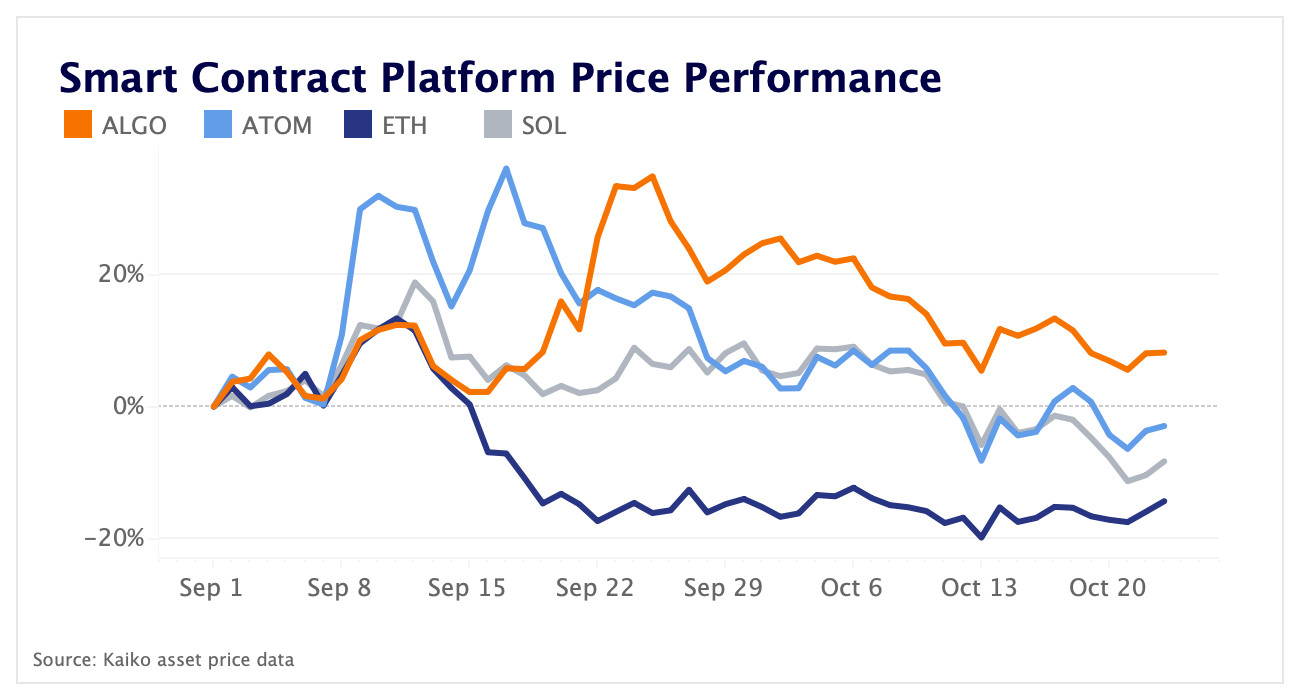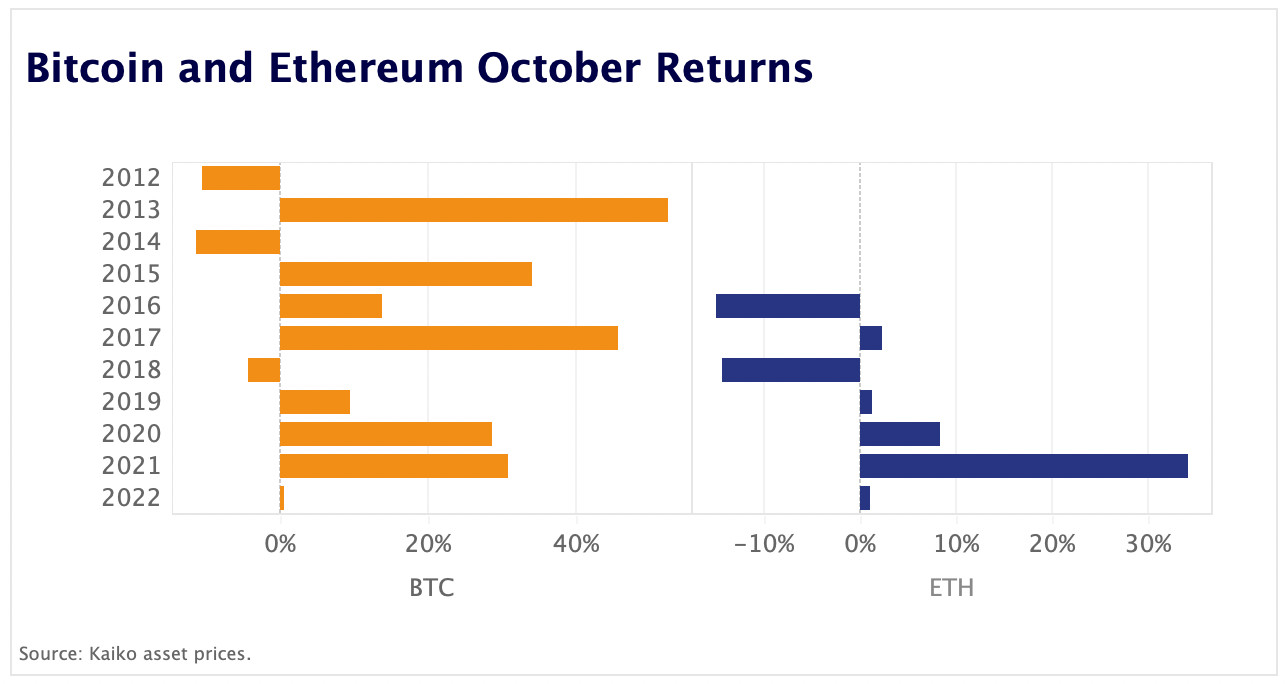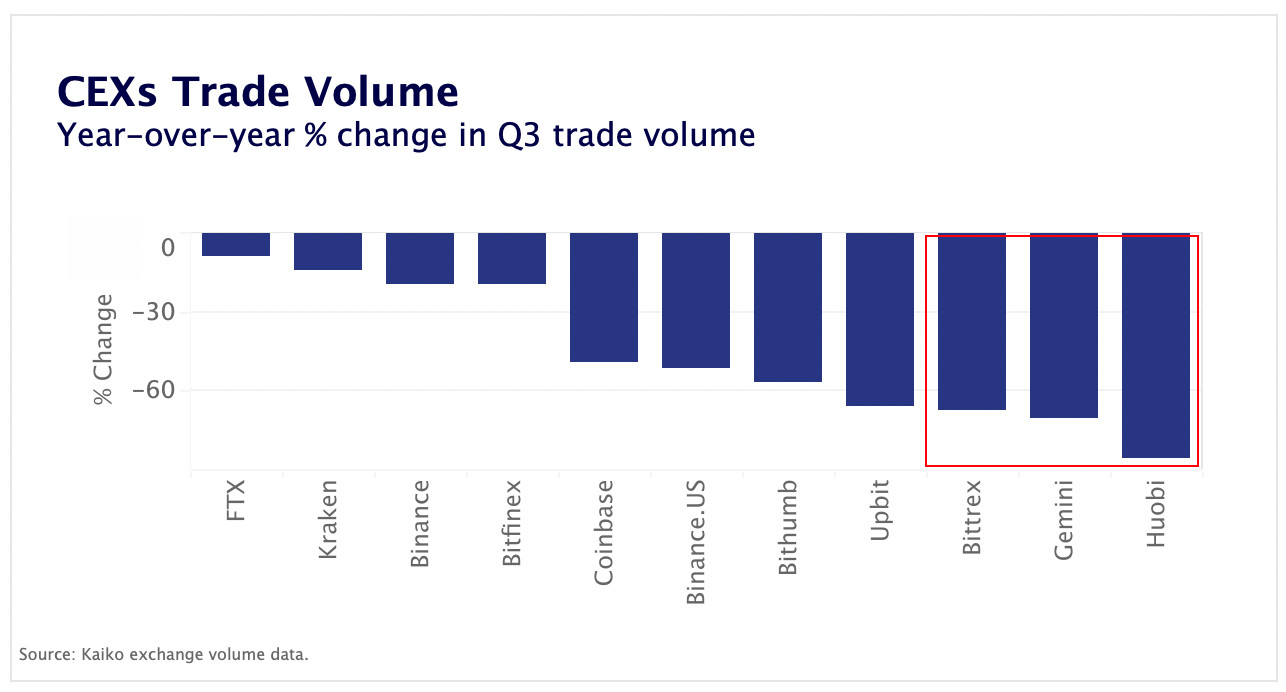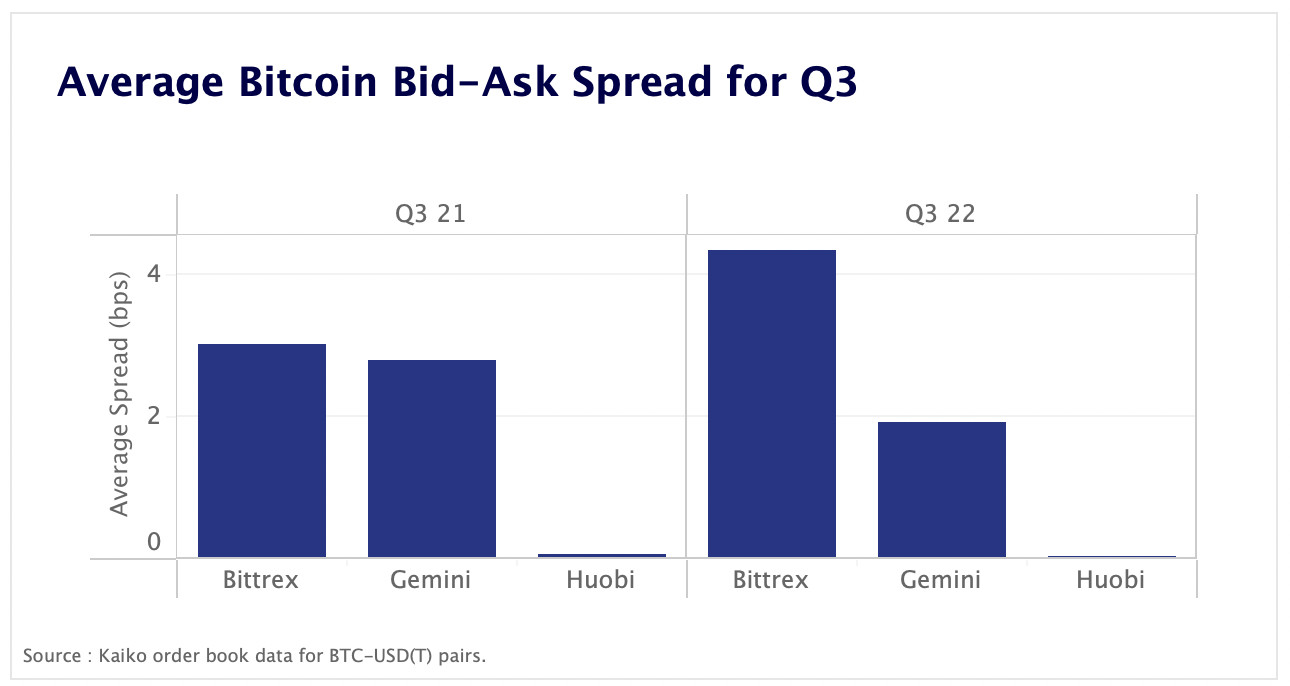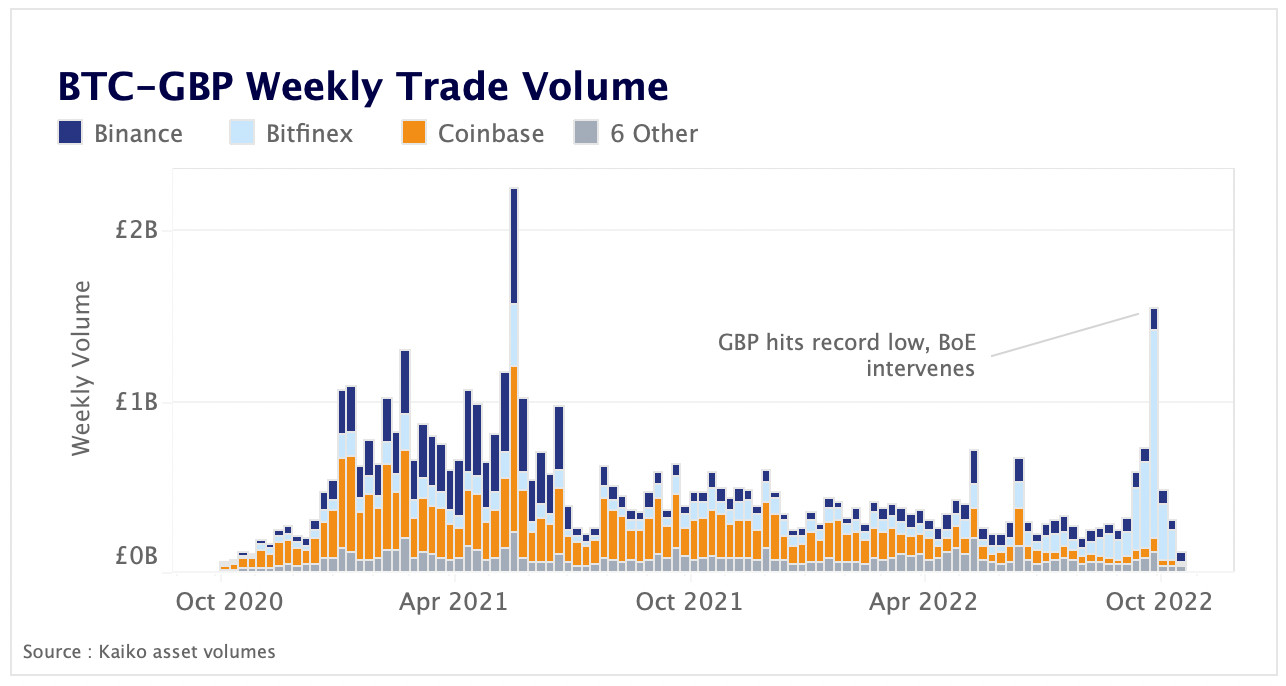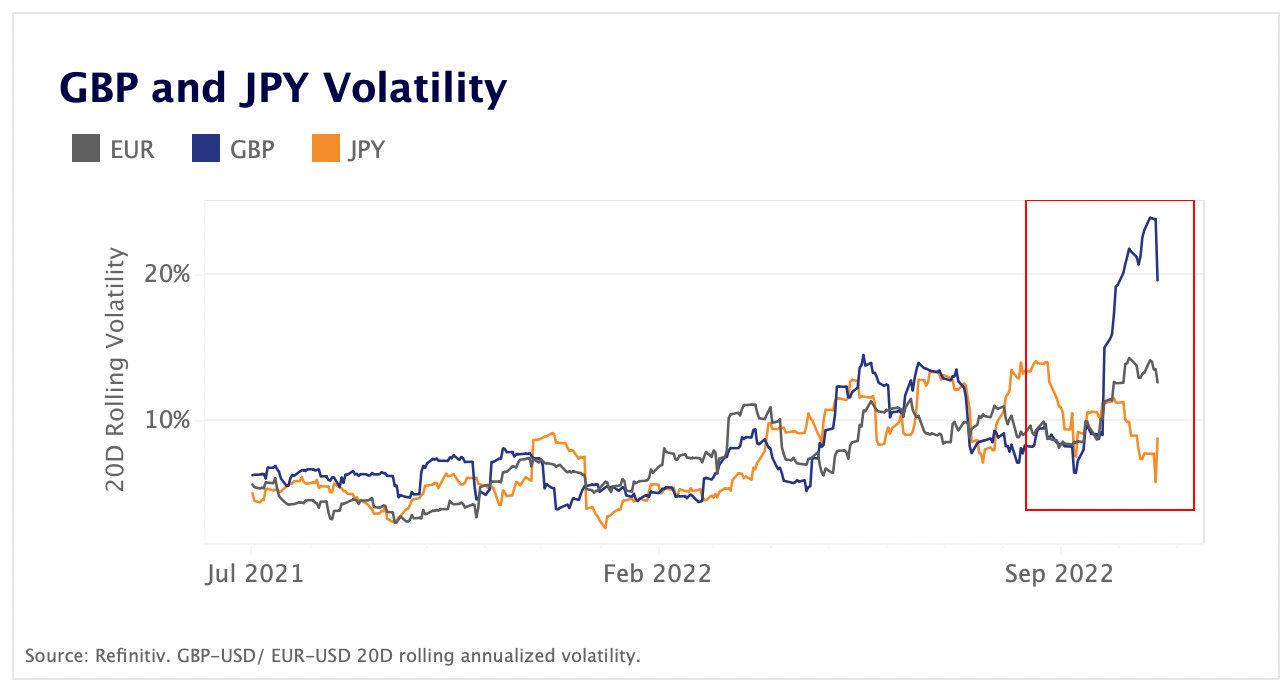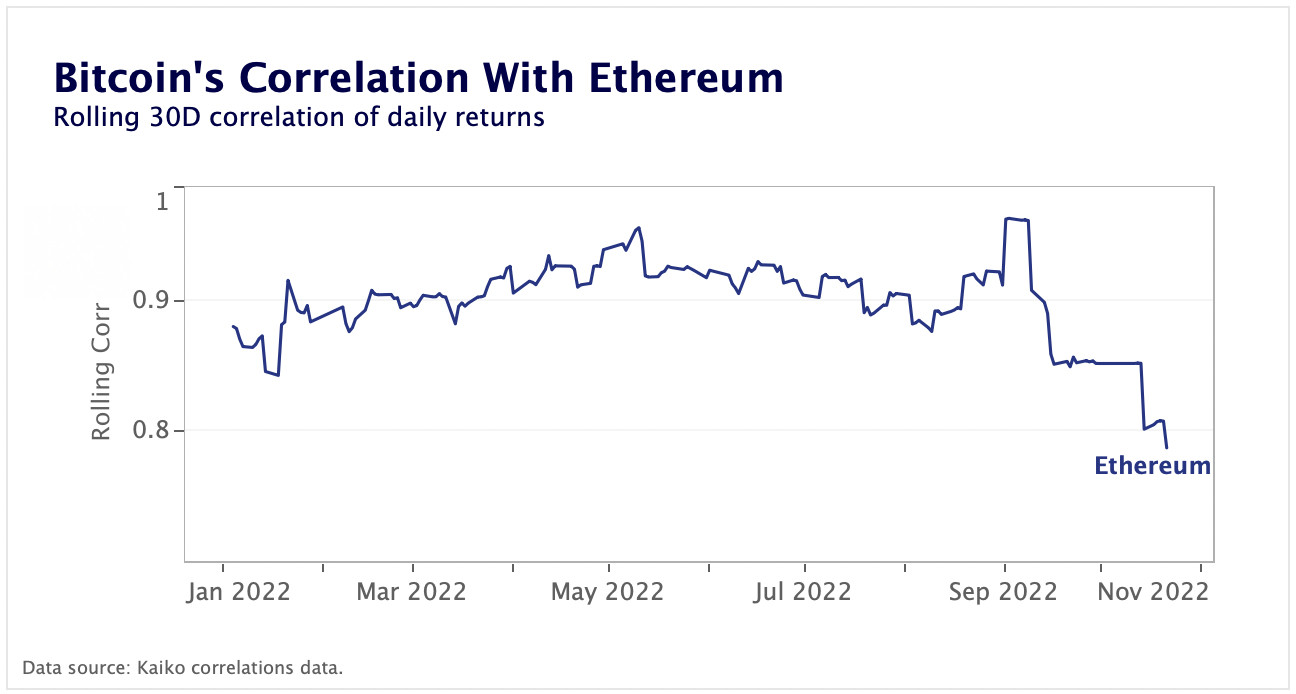A summarizing review of what has been happening at the crypto markets of the past week. A look at trending sectors, liquidity, volatility, spreads and more. The weekly report in cooperation with market data provider Kaiko.
The last 7 days in cryptocurrency markets:
- Price Movements: In 7 out of the last 10 years, BTC has closed October in-the-green. As of this weekend, it is up slightly for the month with one week to go.
- Market Liquidity: BTC's market share of volume vs. all other altcoin trading pairs has climbed to its highest level in two years.
- Derivatives: OI for Tether perpetual futures dropped and funding rates flipped positive since the stablecoin issuer removed commercial paper from its reserves.
- Macro Trends: For the first time since 2018, Bitcoin's 20-day volatility fell below both the Nasdaq and S&P 500 equity indices.
Another low volatility week for crypto
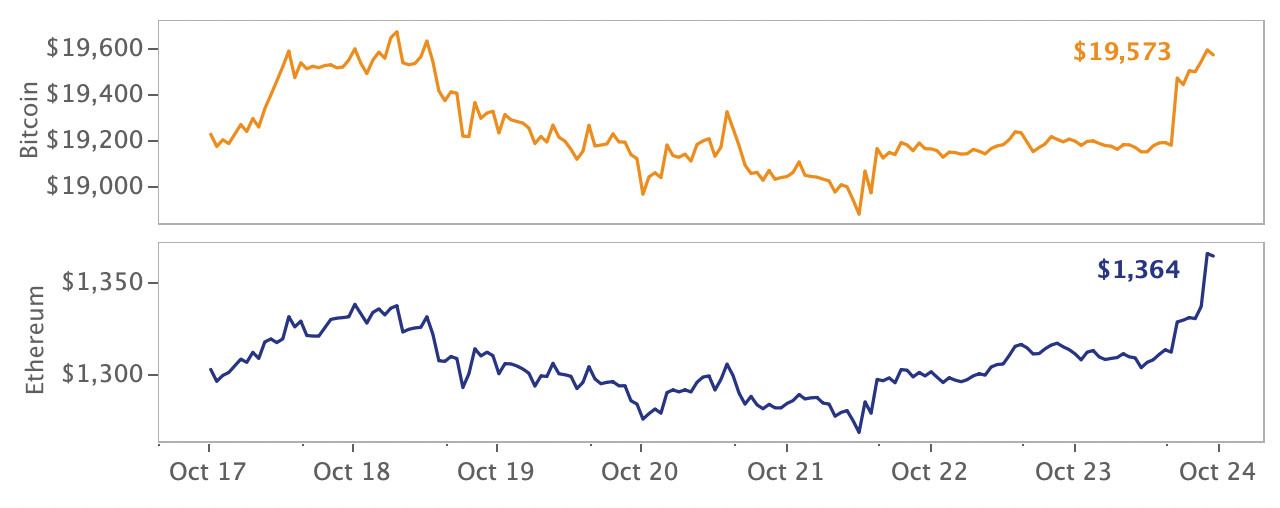
Crypto markets traded flat this week with Bitcoin (BTC) again closing Sunday night below the $20k price level. Regulators sharpened their scrutiny as the SEC and CFTC launched a fresh probe into Three Arrows Capital, looking into whether the fund violated rules by misleading investors about the strength of its balance sheet. In other crypto news, Layer 1 newcomer Aptos launched its mainnet and conducted a $154m airdrop to early users, Mastercard announced a new program to help banks offer cryptocurrency trading, and Binance became the second largest vote holder of Uniswap's DAO.
ALGO outperforms smart contract platform competitors
ALGO, the native token of Algorand, a smart contract platform, is up 8% since September 1, 2022, meaning it is one of the best performers in its category. The price performance could be linked to the network’s soaring total value locked (TVL), which has grown 41% – from $206mn to $291mn. The network also underwent an important upgrade, bringing improvements in block latency, transactions per second, and interoperability. DeFi activity on Algorand has been particularly strong, and it is now the 14th largest network chain by TVL, larger than the Near blockchain ($240mn) but smaller than networks like Fantom ($500mn) and Solana ($900mn). The largest application on the network is Algofi, which includes lending/borrowing and a DEX.
Is another Uptober in the works?
Historically, October has been one of the best months for Bitcoin over the past ten years with average returns of over 18%. Since its creation in 2016, Ethereum (ETH) also registered mostly positive returns in October - albeit a lot lower, averaging around 3%. The trend is in line with traditional markets with October being the highest returning month for US equities since the 1950s. Despite the global shift towards tighter monetary policy continues to weigh on risk assets, BTC is up by 0.4% while ETH inched up by around 1% so far this month.
Bitcoin is back
Bitcoin’s market share of trade volume hit its highest level in more than two years. The share of BTC volume relative to volume for all altcoin markets aggregated across 14 centralized exchanges climbed past 50% for the first time since 2020. Bitcoin dominance has increased sharply since April which suggests that sentiment has turned predominantly bearish after the collapse of Terra’s ecosystem and the wave of high-profile bankruptcies over the summer. During the peak of the 2021 bull market, BTC market share dropped to record lows as traders poured funds into ETH and altcoins, which hit a market share of more than 80% in May 2021.
Exchange volumes struggle in bear market
A lot can change in a year. Since 2021, trade volumes have fallen on every exchange analyzed due to a prolonged bear market that has seen BTC's price drop to less than 1/3 of its all time high. When analyzing the % difference in volume between Q3 2021 and 2022, we can observe every exchange recorded a significant drop in volume. Binance, Coinbase, and FTX — which today are the top three exchanges by trade volume — each experienced lower Q3 2022 volumes, with Coinbase down more than 50%. Bittrex, Gemini, and Huobi suffered the sharpest drop in volumes, down 67%, 70.3%, and 85.6%, respectively.
Both Bittrex and Huobi have had a tough year marked by falling market share and an uptick in regulatory actions. On October 11, Bittrex was hit with the largest enforcement action from the U.S. Treasury for violation of sanctions programs between 2014-2018. Huobi, an exchange catering to the APAC region, has had to exit several jurisdictions, including New Zealand and Thailand, over the past few months, although its forced exit from mainland China last year had the biggest impact on volumes. Two weeks ago, the exchange was acquired by About Capital, which reportedly intends to accelerate a global push.
Despite a drop in volume, liquidity as measured by the bid-ask spread has improved for Gemini and Huobi. The spread serves as a benchmark for liquidity, although it is influenced by a number of factors including trading fees and volatility. Average Q3 spreads for Gemini dropped from 2.79 to 1.9 and for Huobi, from .06 to .01. Bittrex experienced an increase in spreads from 3.02 to 4.34.
Bitcoin trade volumes on UK markets surge in September
Bitcoin volumes surged on UK markets last month as traders took advantage of high FX volatility. BTC actively trades against the British Pound (GBP) on 9 exchanges (down from 13 exchanges a year ago). The increase was driven by trading on Bitfinex, whose market share nearly doubled from 37% to 70% in the week of September 26, when the GBP hit an all-time low against the US Dollar. Weekly volumes have dropped in October, despite Bitfinex introducing a fiat GBP on-ramp service to facilitate trading.
Interestingly, Binance and Coinbase have seen a strong decline in BTC-GBP volumes, with their combined market share plummeting from 80% mid-2021 to about 30% currently. Volumes on Binance fell in the second half of last year after the exchange was forced to pause bank transfers from the European Single Euro Payments Area (SEPA) between July 2021 and March 2022.
Over the past few weeks, a number of crypto exchanges such as KuCoin and FTX have launched targeted campaigns or new derivative instruments aiming to benefit from FX market volatility amid falling trade volume and rising competition.
BTC volatility drops below Nasdaq and S&P 500
BTC’s 20-day rolling volatility fell below both the S&P 500 and Nasdaq for the first time since 2018. BTC's volatility more frequently drops below Nasdaq, which contains riskier tech stocks and tends to have a tighter correlation with crypto markets. This has happened before on only a few occasions and typically near a significant local bottom.
BTC and ETH are already down 58% and 64% YTD, respectively, and many analysts have been pointing to sellers’ exhaustion and lack of clear catalysts as the reasons for BTC’s recent resilience to equity market turmoil. Kaiko data shows that this is the longest period since 2018 that BTC has been less volatile than the Nasdaq 100. While BTC continues its low volatility regime, FX volatility has surged to post-pandemic highs.
British pound records strong volatility increases
The British Pound (GBP) registered the strongest surge in volatility over the past month after UK government fiscal stimulus plans spurred a selloff in British assets. The GBP fell to an all-time low level of $1.035 on Sept 26th before rebounding following the UK government’s U-turn mid-October and last week’s resignation of the UK prime minister. However, economic vulnerabilities and political uncertainty remain high. The British economy faces higher inflation than Europe or the U.S. while it is more sensitive to monetary policy tightening.
The Euro's volatility also surged in October. After plummeting to a fresh 20-year low against the US Dollar last month, it has regained ground despite Eurozone inflation showing no signs of peaking. Last week, stronger than expected producer price data for Germany - a leading inflation indicator - bolstered bets for another European Central Bank (ECB) jumbo-rate hike.
Despite retreating in early October, the Yen’s volatility has doubled since March as the Bank of Japan continued its aggressive monetary easing. Last week, the JPY hit a fresh three decade low against the greenback, surpassing the symbolic level of 150 yen despite the central bank’s likely emergency interventions.
BTC's correlation with ETH drops to 11-month low
Bitcoin’s rolling correlation with Ether has weakened from 97% to 76% over the past month - its lowest level since November 2021. ETH has lost momentum since the Merge, plummeting by nearly 15% while BTC is down by around 2% over the same period. Despite bitcoin still moving in tandem with traditional markets, it has shown growing resilience to surging yields and a strengthening US Dollar over the past few weeks.


